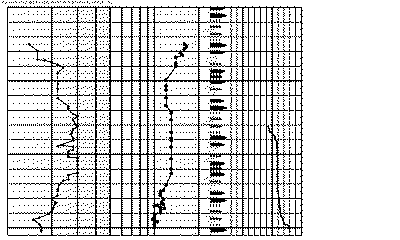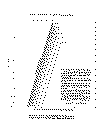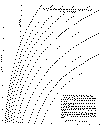 Click to enlarge.
Click to enlarge.McClure Plot™
This is the start of construction of a McClure Plot™:
Another example of a McClure Plot™:
Basic McClure Plot, un-annotated above, and with selected annotation below. Shown are conductivity, acoustic log and actual mud weight data. The McClure Plot in use by Baird also includes density, interpreted pore pressure, frac gradient, overburden gradient, any pressure tests, kicks, check for flows, temperature, background gas data, cuttings, geologic tops, paleo markers, lithology, casing points and leak-off-tests. An indexing feature is attached to the lower right corner to identify the well and elevations. Call for this information.
Baird's copyrighted McClure Plot® is our way to standardize the plotting of log and seismic data. Previous methods have been too confusing for the experienced pressure prediction specialist. The McClure Plot is plotted using a fixed semi-log scale so that wells and data studied from the world-over can be compared and data in the field operations can be analyzed quickly.
It is our recommendation for all engineers and geoscientists that this standard form be adopted. At Baird Petrophysical, we have created a database of well data and drilling data that conforms to this recommended standard. Contact Baird to obtain the specific specification for this useful standard.
Here is a blank McClure Plot™: 
Here is a Pennebaker Seismic Overlay: (Note: this overlay
requires 5 inch per cycle log log paper for the data. This overlay is not
used with the BPI McClure Plot.)

Here is a McClure Plot Overlay: (Note: these overalys
require 5 inch per cycle semi-log paper for the data. These overlays are
suitable for some areas in shallow water and land using the BPI McClure Plot
which is available above.)